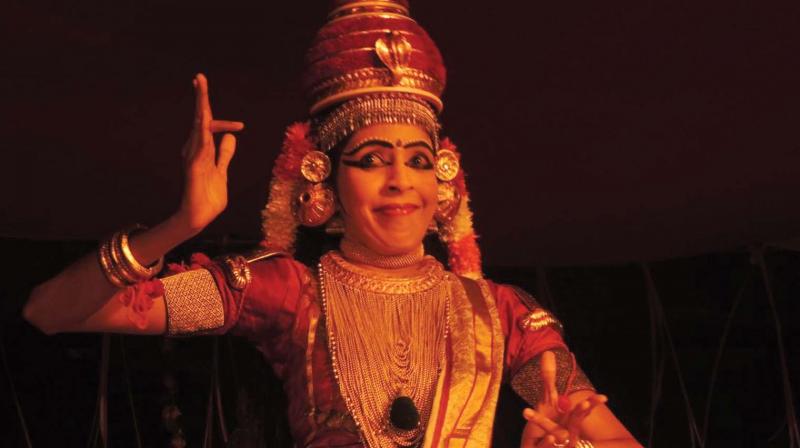Preserving Koodiyattom

All states in the country have their own unique art forms that date back to many centuries. Kerala’s own 2,000-year-old temple art Koodiyattom, however, has few leading faces, Aparna Nangiar being one of them. The 33-year-old artiste is very keen to spread the word about the not-so-popular art form which lacks audience.
“Koodiyattom or Nangiarkoothu (the solo female version of Koodiyattom) aren’t for everyone. The art form itself demands a certain level of knowledge like kathakali. So, the art is still enjoyed by only a selective set of audience, which might have affected its popularity. As an artiste and teacher, I used to hold workshops and classes for students at schools and colleges apart from staging a demonstration on the art form before a recital,” says Aparna.
Koodiyattom is known for its elaborate costumes, dramatic make-up and highly stylised abhinaya (facial expressions) and gestures. Mastering the art form is no easy task either, as it involves years of training, of Sanskrit lessons too. “The results won’t be seen that easily, which makes kids think twice about learning,” she feels.
Traditional Koodiyattom training is in the gurukulam system. Aparna too has been trained the same way at Ammannur Gurukulam near her home under Padma Bhushan Ammannur Madhava Chakyar. “We had early morning classes and so, we used to sleep at guru’s house. From 4 am to 6 am, it is sadhakam time where we recite Sanskrit verses. Since my school too was nearby, I attended my regular classes as well.”
Now, 20 years into Koodiyattom, Aparna feels that times have changed and so has attitude of kids. “Students now join classes only to participate in competitions and the gurukulam tradition is gradually vanishing. The art form has also been commercialised a lot. It hurts because for me, Koodiyattom is not something meant for only fattening your wallet.”
However, the art form has several takers in foreign countries. “Even during my training days, our gurukulam had students from Europe and other Asian countries like Warsaw University professor Bozena Sliwczynska and Tomeo Irino from Japan,” recalls Aparna, who is currently preparing for an upcoming Nangiarkoothu recital at Sree Sankara College, Kalady, where she is working as an assistant professor in Sanskrit. Still training under her father Ammannur Kuttan Chakyar, she also teaches students at the gurukulam, hoping to carry on the legacy.

